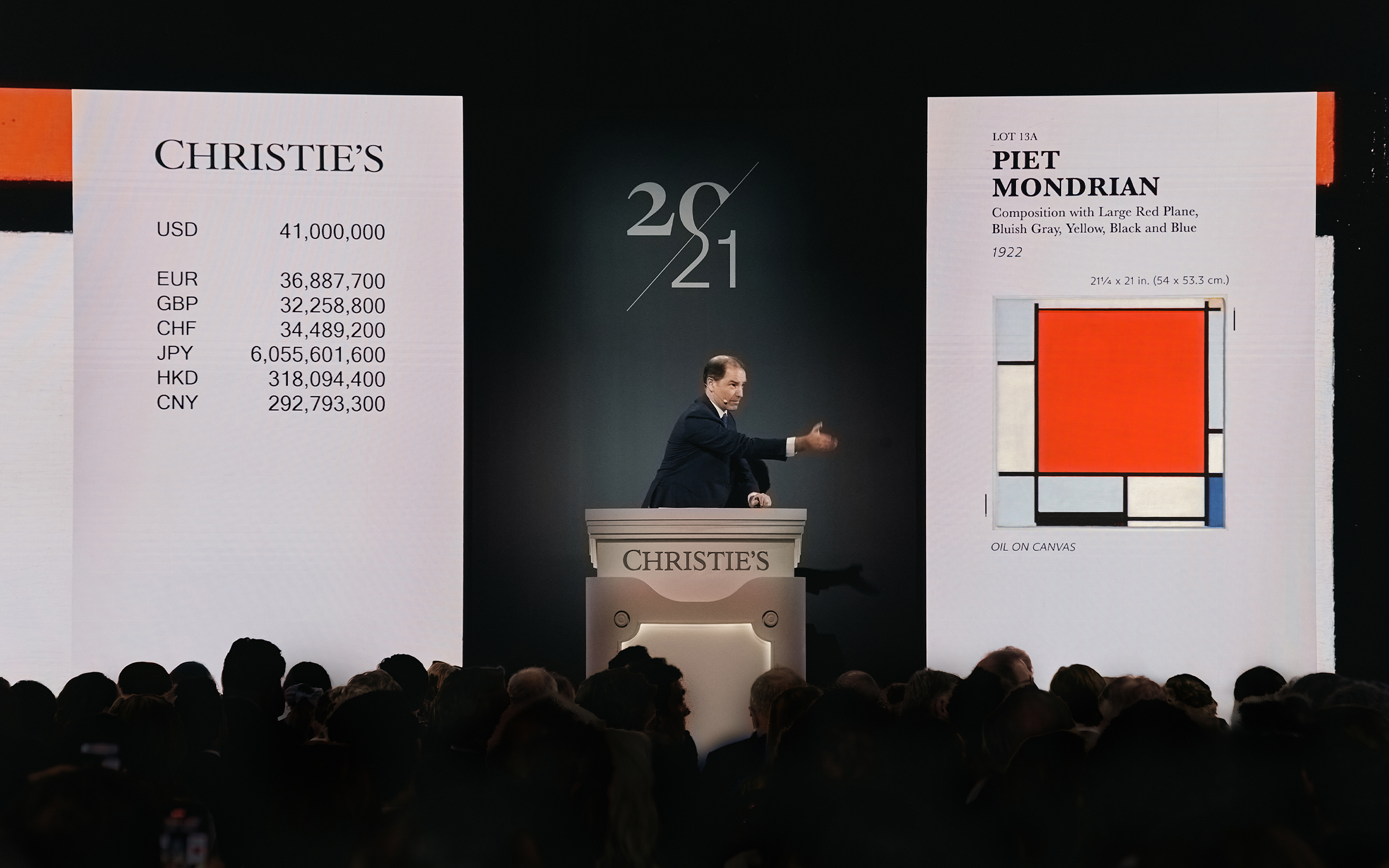Why is diversification essential in investing?

Any serious investment strategy takes into consideration the ecosystem in which it operates. In fact, each economic upheaval affects the investments and imposes a new analytical framework on them each time. Whether it's stock market volatility caused by political statements, diplomatic tensions on the European continent, or even the reduction in global trade with increases in customs fees. This new situation forces investors to adopt rational portfolio management, based on balance and caution. Among the relevant responses to this situation, diversification appears to be a key to protecting one's assets.
In investment, diversification refers to the act of distributing one's assets across different asset classes. The objective? Limit the potential losses of a negative event across your entire portfolio. This approach - which does not eliminate risks - guarantees better risk management, and helps ensure more stable returns.
Today, while an increase in the number of crises is shaking up the global economic context, it seems essential to diversify your assets in order to protect yourself against all forms of risks. However, art, which has often suffered from an image of pleasure reserved for an elite of connoisseurs, has gradually established itself as an asset in its own right, particularly relevant in terms of diversification.
Understand everything about the concept of diversification in investment
What is diversification?
”Don't put all your eggs in one basket”. This adage perfectly summarizes the principle of diversification in investments. In other words, this approach consists in distributing one's capital across several types of assets, economic sectors or geographic areas. The objective? Prevent a poor performance on one of them from affecting the entire portfolio.
This logic is based on the main idea of correlation. To build a portfolio, it is indeed crucial to select assets whose performances react differently depending on the vagaries of their respective markets. For example:
- While a stock may fall (stock market), a bond may remain stable or increase (bond market);
- While a work of art (art market) may increase in value, a cryptocurrency may collapse (cryptocurrency market);
- While a property (rental market) can appreciate, a currency can fall (money market).
In other words: a good portfolio is a portfolio composed of differentiated assets that respond to distinct markets. So if one of these assets collapse, it doesn't take the whole portfolio with it.
Diversification and risk management: what are the links?
In investing, risk management is an essential dimension to take into consideration. However, this does not mean that the risk must be minimized. Some investors, in order to fulfill their strategic objectives, are sometimes willing to assume the consequences: this is what we call risk appetite.

However, diversification is part of a rational and prudent investment logic. Indeed, by spreading their capital across multiple asset classes, investors reduce the effects of volatility. Thus, a portfolio that is highly concentrated in terms of assets will be mechanically more vulnerable to shocks (and therefore riskier). Whereas a portfolio that is not very concentrated will be more resilient, and will limit potential losses in case of downturns on one of the assets. With diversification, there is therefore a phenomenon of overall risk reduction without giving up the potential for return.
Diversification: impacts according to macroeconomic events
Let's now detail how diversification makes it possible to absorb certain falls in values linked to macroeconomic developments associated with one of them. In other words, the objective here is to learn about the impact of economic events on certain types of traditional assets in order to avoid a negative spiral, or a chain reaction on your portfolio.
- In times of inflation, you should know that commodities tend to play a protective role, while stocks and cash lose value.
- In a period of recession, these are cash or government bonds that investors take refuge in.
- In a period of deflation, real estate or art are safe values, where some raw materials are more penalized.
Here is a summary table to capture the evolution of certain assets according to well-known economic phases:
Given these macroeconomic parameters, it is therefore essential to find a balance that can respond to the different economic moments, and to be able to have an agile portfolio. To summarize, diversifying means having differentiated assets, linked to distinct markets and reacting differently depending on economic phases.
Warning: diversification does not “guarantee” returns
It seems essential to remember that no investment guarantees a guaranteed return. Each asset lives according to its own market mechanisms, and most of them are subject to cyclical developments; whether periods of crisis, or phases of euphoria.
Thus, even if diversification allows a reduction in risk through the phenomenon of distribution, it does not eliminate the possibility of loss. Because no asset, especially in times of uncertainty, is immune to a fall or depreciation in value. Diversification must therefore be thought of as an optimization tool, and not as a promise of gains.
Portfolio strategy in times of uncertainty
Asset distribution: an essential balance to find
A good portfolio strategy must meet the investor’s goals and execute the corresponding strategy. Thus, to compose a portfolio, investors must know the particularities that make up their various asset classes, in particular in terms of liquidity, value, volatility, taxation or even the economic situation.
The idea, in the context of diversification, is therefore to allocate assets by achieving a balance between performance and security. The aim will be to create a subtle mix between volatile values and values perceived as more stable.
Investor profile and investment horizon
As we saw above, portfolio strategies depend on the goals and risk appetite that everyone is able to accept. However, two main types of investor profiles generally differ:
- Young investors : they are more exposed to risk, opting instead for volatile assets. Among the reasons: they have less experience, want a quick return, have less capital, so their risk is lower...
- Experienced investors : they are more aware of the vagaries of the market, have more wealth, and prefer stability, because they would risk losing more.
Finally, temporality should not be overlooked either because it also gives a general trend. Short investment horizons are often preferred when you want to make high and fast gains. Long horizons are quite popular when it comes to achieving stable and secure returns over the long term.
The classic mistakes in portfolio management
Among the most common mistakes, there are five main categories:
- Excessive concentration : investing in very similar assets (everything about real estate, everything about cryptocurrency, everything about a currency, everything about a sector...);
- The liquidity issue : invest in assets that have obstacles to resale (risk: being stuck with your assets and not being able to resell them in time).
- Lack of market knowledge : investing in an emerging market, a tense geographical sector, or a fledgling market with little history.
- The effects of fashion : invest where “everyone is investing” at the same time.
- The lack of a clearly defined strategy : investing without taking into account your capital, assets, risk appetite, investment horizon or personal goals.
Diversification is therefore a relevant method when it comes to creating a safety net that protects one's assets.

The main asset classes in a diversified portfolio
Now let's look at the main asset classes in a diversified portfolio. The challenge: to find the right mix according to the economic environment.
Shares and bonds
Stocks and bonds embody two traditional pillars of financial portfolios. Shares on the stock market, at first, have the advantage of offering a fairly attractive return potential. However, they have the disadvantage of having high volatility, as they depend on stock market movements and are sensitive to economic conditions or political statements. As we saw recently when Donald Trump, President of the United States, announced reciprocal customs rates, the world's stock markets collapsed.
For their part, bonds are considered safer because they are more predictable. Indeed, by buying bonds, investors know the value of the coupon (interest rate), the duration of ownership, and the amount repaid at maturity. Also, the risk of government default being extremely low, this makes their value more solid. However, they remain subject to risks, which are certainly lower than equities: inflation risk or currency risk, which tend to reduce the value of the return.
Real estate and liquidity
Real estate has always been considered a safe haven. Stable, tangible and generating passive income, it allows you to build solid assets over the long term. However, this asset has a flaw: it is not very liquid. Indeed, to get rid of a property, it is necessary to take the time to find the right price, to put it up for sale, to identify an interested buyer or to carry out administrative procedures.
And that's when the liquidity issue comes in. When it comes to building an investment portfolio, it is important to keep a portion of your assets that can be resold easily and quickly in order to “get rid of them” and limit losses in the event of a crisis. Thus, highly liquid assets, such as cash or short-term investments, meet this objective, and therefore allow you to be reactive, although they generate little return. But this example illustrates that balance and agility are essential in the constitution of its investment strategy.
Alternative assets: towards enriched diversification
Finally, the alternative assets are attracting the interest of more and more investors looking for diversification. These are investments that are generally less correlated to traditional financial markets, often illiquid but potentially more profitable (and therefore riskier). Among these non-traditional investments, we find among others: cryptocurrencies, private equity, works of art, vintage watches, wine or even certain car models. Some of these investment classes offer promises of high profitability (cryptocurrency), while others allow for better stability (art). On the other hand, what do they all have in common? It's about allowing people to think outside the box and continue to broaden their diversification.
Why integrate alternative assets into its strategy?
Integrating alternative assets into your strategy makes it possible to better manage risk and to try to better stabilize your returns. Let's now look at the intrinsic advantages of alternative assets in the context of portfolio diversification.
Low correlation with traditional markets
“Classic” assets respond to markets that, to some extent, are interconnected. In other words, their values fluctuate according to the same macroeconomic factors. Example: in the event of a general rise in interest rates, the value of bonds falls, so does the value of shares, and real estate demand weakens. All are linked and have similar impacts.
On the other hand, alternative assets have the particularity, and the advantage, of reacting according to their own rules. Often backed by “niche markets” (art market, cryptocurrency market, etc.), they better absorb external economic shocks. If we keep the example of the general rise in interest rates, the cryptocurrency market will remain stable, and even in some cases, will appreciate.
Thus, by integrating a portion of alternative assets, the investor makes the entire portfolio more resilient, because it is more heterogeneous.

A differentiated source of return
In addition to the erratic nature of the markets, alternative assets can show interesting performances. If we take the example of the artists composing the Artprice100©, we note that this index has recorded growth rates higher than many stock market indices over the last twenty years. The Art Basel & UBS report, The Art Market 2025 shows in particular the stability of the market, which has been hovering around 50 and 70 billion dollars per year for more than 20 years.
Warning: Past performance is no guarantee of future performance. Investing in unlisted assets involves the risk of partial or total loss of invested capital.
Concrete example: art as a tangible alternative asset
Unlike other assets, art as an investment ticks several boxes when it comes to diversification strategies. Among the characteristics of the goods, we note that:
- These assets are tangible : they have a physical and real existence;
- These assets are rare by nature: the offer is structurally limited;
- These assets have a strong cultural and emotional value : they transcend economic cycles and crises.
Investing in art: diversification and cultural heritage
Art: a tangible asset in its own right
As we have just mentioned above, art has the characteristic of being a tangible asset. In the same way as real estate, it is based on a physical, concrete value that is almost impossible to duplicate. It also has a particular heritage dimension. It can also be transmitted within the family, which makes it a specific asset. It is also a non-fungible asset, which has a unique value, unlike an action. Finally, it should be noted that, unlike other assets, art does not offer a steady return, as would a share (dividends) or a property (rents). It therefore constitutes a stock, the gain of which will be made upon resale, a few years later.
Art: a safe haven in times of economic crisis
Because of its decorrelation from financial markets, art is considered a safe haven. In times of inflation, these types of assets retain their value better than others, unlike cash. It also happens that great works are particularly sought after when it comes to protecting assets in times of uncertainty or crisis. Art also protects against inflation and monetary risks, because it is driven by global demand, combined with a fairly limited supply.
An emotional and statutory asset
Art is one of the few assets that are linked to emotion and social status. Who—regardless of their value—would claim to own a Livret A or a stock market share? Works, on the contrary, are objects of passion that can be acquired with a dose of pride and emotional connection. In fact, some can even be held and displayed at home. However, other methods of ownership, especially collective ownership (such as Club Deals), allow you to buy a “share” without physically owning it. That is what we are going to see now.
How can art be integrated into a diversification strategy?
Direct acquisition vs. pooled investment (or: syndicated investment)
To acquire a work of art, two options, with their advantages and disadvantages, coexist: direct acquisition and collective investment.
- Direct acquisition : this type of purchase requires arriving with a relatively high budget, a certain amount of knowledge in art and skills in terms of acquisition methods. It also involves knowing your responsibilities in terms of ownership constraints (insurance, conservation, etc.) and resale constraints (circuits, taxation).
- Collective investment : this type of purchase is generally made via Club Deals and provides access to quality works, while benefiting from a pre-established selection by specialists. In this mode of purchase, a reduced entry ticket is provided, which allows many players to invest.
The role of expertise in the selection of works
Beyond the method of purchase, one does not invest ina work of art lightly. This act is neither trivial nor easy; it requires rigor and expertise. Here are a few things you need to be vigilant about:
- Authenticity and traceability : the art market sometimes experiences scams, fakes, counterfeits or erroneous evaluations.
- Market trends : artist, history, movement, recent exhibition, technique used... All these elements must be examined and analyzed to make a conscious and informed purchase.
- Recognized buying channels : galleries, auction houses, specialized platforms... Known buying channels make it possible to protect yourself from numerous risks.
- The specialist : whether he is a dealer, collector or art historian, his advice will necessarily be relevant and will help to invest in a work with the necessary caution.
In the context of collective purchases, companies such as Matis are composed of specialists who support investors in the selection of works, but also in the conservation, possession and resale.

Examples of art investor profiles
While investment in art has always seemed reserved for a certain elite of connoisseurs, recent changes in the sector have led to the emergence of new buyer profiles:
- The collectors, motivated by aesthetics, and who want to build a collection with secure investments.
- The diversifiers, motivated by the search for balance.
- Active young people, motivated by security and attracted by original investment formats.
- Families and heirs, motivated by the constitution of a heritage to be transmitted to their descendants.
Conclusion: adopting a diversified investment strategy: the cornerstone of well-managed wealth
In short, investment diversification is the key to building a solid and resilient portfolio. In particular, it makes it possible to:
- Reducing the risk : the shocks associated with the fall of one asset do not impact others.
- Offset potential losses ou buffer against losses : in terms of the portfolio, the gains from one asset offset losses from another.
- Seize opportunities : with a solid and diversified portfolio, it is possible to invest in new vehicles without putting yourself in danger.
- Building a resilient heritage : a mixture of volatile values with short-term returns and stable long-term values allows the increase of assets without taking risks.
Finally, the integration of art as an alternative asset allows both to densify the diversification of its portfolio, while adding emotional and symbolic value to its investments.

.png)


.jpg)